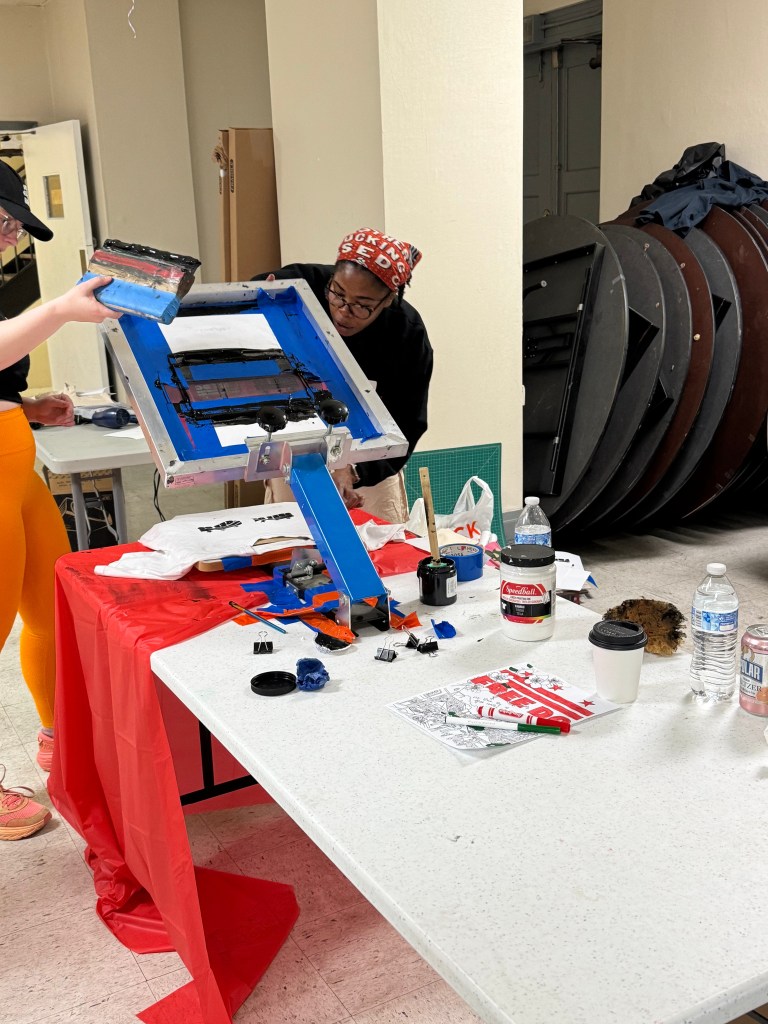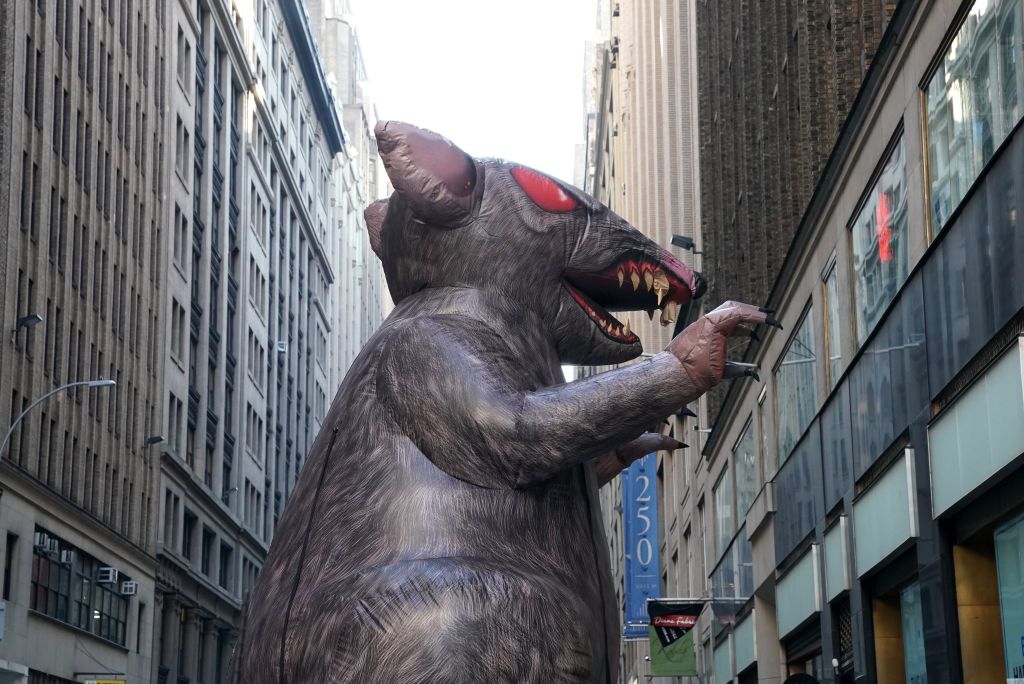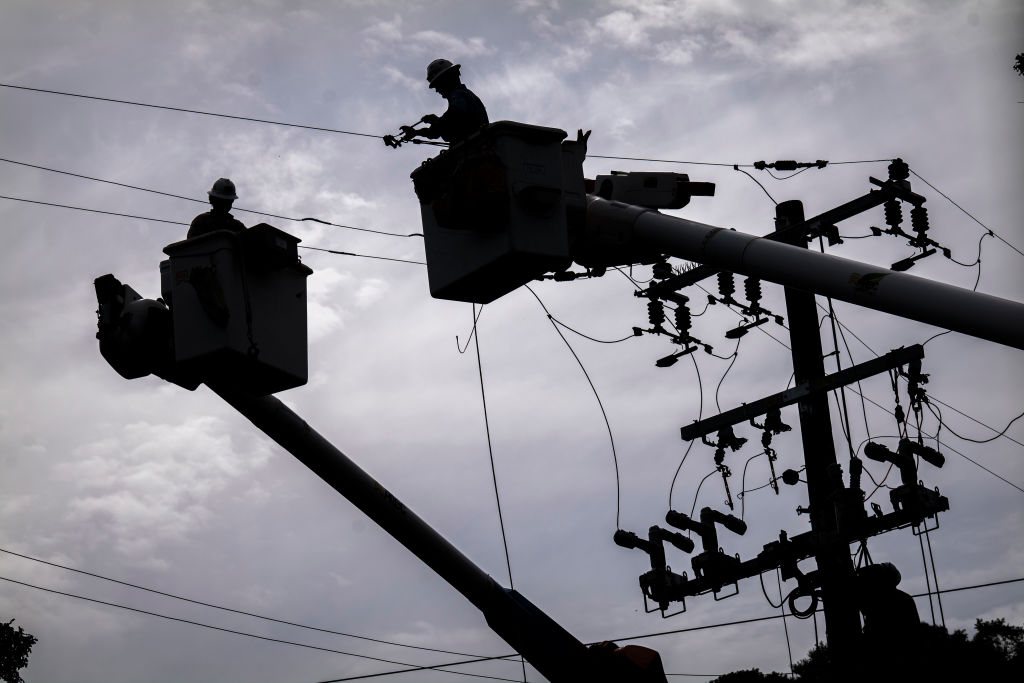
Two Dictators Walk Into a Bar…
April 15, 2025
The Call to Execute Luigi Mangione Is Indefensible
April 15, 2025Federal Government Under Siege is a multipart series that explores the impact of the Trump administration’s overhaul of the federal government on Black communities.
WASHINGTON — For most of 61-year-old Jocelyn Frye’s life, her hometown of Washington was majority Black. As a child, she was keenly aware of how some white lawmakers would disparage D.C. and assert that its residents were dangerous.
“The predominantly white Congress was almost like an overseer — and I use that word intentionally,” said Frye, who lives in the district’s Michigan Park neighborhood, which is also where she grew up. “There was always this sense that D.C. couldn’t take care of itself, this sense that it couldn’t rule itself, that was paternalistic and disrespectful. This narrative fed a stereotype about Black communities.”
Now, Frye and other residents say, that narrative may be contributing to demands to strip away much of the district’s ability to govern itself.
As plans to raze Black Lives Matter Plaza — a mural in D.C. created after the murder of George Floyd in 2020 — were underway, U.S. Rep. Andy Ogles of Tennessee and U.S. Sen. Mike Lee of Utah, both Republicans, introduced legislation to overturn the District of Columbia Home Rule Act of 1973. Ogles said in February that D.C. Mayor Muriel Bowser has left the capital in “shambles.”
Capital B reached out to Bowser for comment on home rule. Her office noted her previous statements celebrating the Home Rule Act and advocating for full D.C. statehood.
Many claims about crime in the district, municipal governance experts argue, ignore how D.C.’s complex criminal legal system — a result of its lack of real autonomy — can impede efforts to prevent violence.
The demolition of a plaza that symbolized the country’s “racial reckoning” five years ago came as a response to Republican threats to D.C.’s funding. It also followed a campaign cycle during which President Donald Trump used his platform to pledge a “federal takeover” of the district.
For more than half a century, federal officials have empowered D.C. residents with what’s known as home rule authority, which means that district voters can elect a local government, including a mayor and a legislative body. Congress still reviews D.C.’s laws and has power over its purse strings.
Without home rule, the district would be run by federal lawmakers whom its roughly 700,000 residents never elected and who would seemingly have little incentive to respond to infrastructure needs, public safety concerns, or other challenges.
“In a country that prides itself on being the model of what democracy should look like, we sit in a district that doesn’t experience democracy in the same way,” said Frye, who is the president of the National Partnership for Women and Families, a nonprofit advocacy group. “No community is perfect. No set of leaders is perfect. Holding D.C. to an impossible standard in an attempt to rationalize why Congress still plays this role of decider doesn’t make a lot of sense.”
Race has always been a main character in the story of home rule, according to D.C. Councilmember Christina Henderson, 39. During Reconstruction in the 1860s, white elites in the district insisted that having no autonomy would be better than allowing Black men in D.C., who had just gained the right to vote, to influence local affairs.
“This history is super important,” said Henderson, who has been an at-large councilmember since 2021. “White D.C. elites were essentially like, ‘We’re willing to give up our right to vote if that means that nobody has it. Take it from everybody.’”
The fight for home rule, as we know it today, gained fresh momentum in the 1960s. The passage of the Voting Rights Act of 1965 shifted the political landscape, and encouraged activists such as Walter Fauntroy, a native Washingtonian, to register Black voters in districts where they could tip congressional races. Organizers made sure that D.C.’s lack of political autonomy was an animating issue in elections across the South.
Thanks to these efforts, newly enfranchised Black voters in 1972 were able to oust U.S. Rep. John McMillan of South Carolina, a Democrat and a segregationist who had been obstructing home rule on the House District Committee. With McMillan gone, the Home Rule Act passed both houses of Congress, and President Richard Nixon — who had no desire to supervise D.C.’s affairs — signed it into law.
In response to the present-day threat to home rule, many residents are speaking up, focusing their attention on preserving at least some degree of autonomy in D.C.
On a recent Saturday in the basement of St. Martin of Tours Church in the district’s Bloomingdale neighborhood, residents participated in “Community Art Build Day,” an event hosted by Free DC, a movement that seeks to educate residents on an array of issues, including home rule.
For Alex Lewis, the day was an opportunity to establish community at a time when home rule is more vulnerable than ever. The Lexington, Mississippi, native moved to the district around five years ago, drawn to its diversity — while D.C. hasn’t been majority Black since 2011, it’s still nearly 45% Black — and the ubiquity of political organizing here.
“It’s great that there are things like this. It makes me feel less hopeless and less alone,” Lewis, 27, said. “It makes me feel like there’s something I can do.”
Inside the church, music pulsed from the speakers: “Stop! In the Name of Love” by The Supremes, “Let’s Stay Together” by Al Green, “I’ll Be There” by The Jackson 5. Children and adults decorated posters as they ate slices of pizza. And, later, some walked around the block to hang up their artwork, emblazoned with messages such as “Keep D.C. free!” and “D.C.’s workers are beautiful!”
The event also was an attempt to mitigate some of the unease felt by residents across the broader D.C. region — which includes parts of Maryland and Northern Virginia — as the administration guts the federal workforce. Until this year, Black families viewed a “good government job” as a ticket to the middle class (Frye’s father was in the U.S. Air Force, and her mother worked at the Library of Congress). Now, that access is caught in the crosshairs of Trump’s war on diversity.
Free DC has been hosting frequent meetings and trainings throughout the district’s eight wards — usually in the evenings at a public library — to raise awareness of the uncertainties ahead and to teach residents about the role of protest and nonviolent action in advancing civil rights goals.
Home rule’s murky future
It’s easy, 49-year-old George Derek Musgrove said, for D.C. residents his age and younger to take home rule for granted: They don’t know life without it. The Baltimore native arrived in the district in 1994 and was in and out until 2005, when he came to stay.
But there’s never been as much unanimity within a single political party around eliminating home rule as there is in the current Republican Party, said Musgrove, who is a history professor at the University of Maryland, Baltimore County. He’s also the co-author of the 2017 book, Chocolate City, A History of Race and Democracy in the Nation’s Capital.
“Going into the 2024 presidential election, you had Project 2025 talking about getting rid of home rule. You had Trump talking about taking over D.C. and cleaning it up — whatever that meant, but certainly a curtailment of home rule,” Musgrove said. “You had legislation, sponsored by Republicans, that would do away with home rule. Even if it isn’t serious — it doesn’t create a replacement governing structure — we know that the GOP, under MAGA leadership, could very well do it.”
And if Trump and his associates gut home role, residents would likely have to rely on a congressperson who’s not answerable to them to address their everyday issues.
“If you’re asking people who have absolutely no reason to look out for your best interests to look out for your best interests, that’s a recipe for really horrible governance,” Musgrove added. “The job of being a local legislature would obviously be subverted to the duties that they have to the people who actually elect them.”
Henderson underscored that, regardless of whether Democrats or Republicans are in power, her message is the same.
“D.C. isn’t a federal agency. We operate as a city, a county, a state, and a federal district,” she said. “And there are 700,000 people here who are trying to live out the American dream, just like everybody else. It’s our responsibility to ensure that we’re providing services to residents of the district that are beyond what the federal government is able to do, just like other jurisdictions: trash pickup, public schools, traffic enforcement, all those things.”
Residents aren’t taking the threat to home rule lying down, even if — as Eleanor Holmes Norton, D.C.’s nonvoting representative to Congress, put it to WUSA in February — many feel overwhelmed. They’re mobilizing, emphasizing the perils facing the district.
Capital B reached out to Norton about the issue of home rule. Her office didn’t respond to a request for an interview.
“Some people are gripped by hopelessness right now, so Free DC functions as a joy-driven movement that builds noncompliance and creates events to raise awareness and enact change,” 32-year-old Shaila Huq, a Free DC leader, said, pointing to the recent Community Art Build Day as an example of this organizing.

It was important, she explained, to supercharge people’s creativity — to give them something to do where there’s both direction and autonomy — and then show a clear connection between creating art and using that art to disrupt.
“The equation isn’t really complete until you figure out what you’re going to do with your protest art,” said Huq, who has lived in D.C. since 2015. “What’s your goal? What message are you trying to get across? For us, we’re trying to activate that fire in your stomach, to make people sit up and say, ‘What they’re trying to do to the district is wrong.’”
Residents will continue organizing in the weeks ahead, as Free DC hosts workshops and other events to encourage people not only to fight for the bit of autonomy that the district has won but to push for complete self-governance.
This also is a moment when residents such as Frye, in the Michigan Park neighborhood, hope that the rest of the country will learn and finally understand that D.C. is as complicated, imperfect, and deserving of respect as any other jurisdiction.
“There are people who come here and know nothing about the nuances. They just harp on one or two things,” she said. “But I am here for a reason. I love D.C. There’s no other city I’d rather live in. Can it be better? Absolutely. Are we perfect? Most assuredly not. There are lots of things that could be fixed. But a lot of the narrative is disingenuous. And it’s not like you can’t go to other cities and find problems.”
Great Job Brandon Tensley & the Team @ Capital B News Source link for sharing this story.





